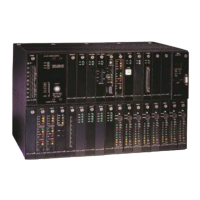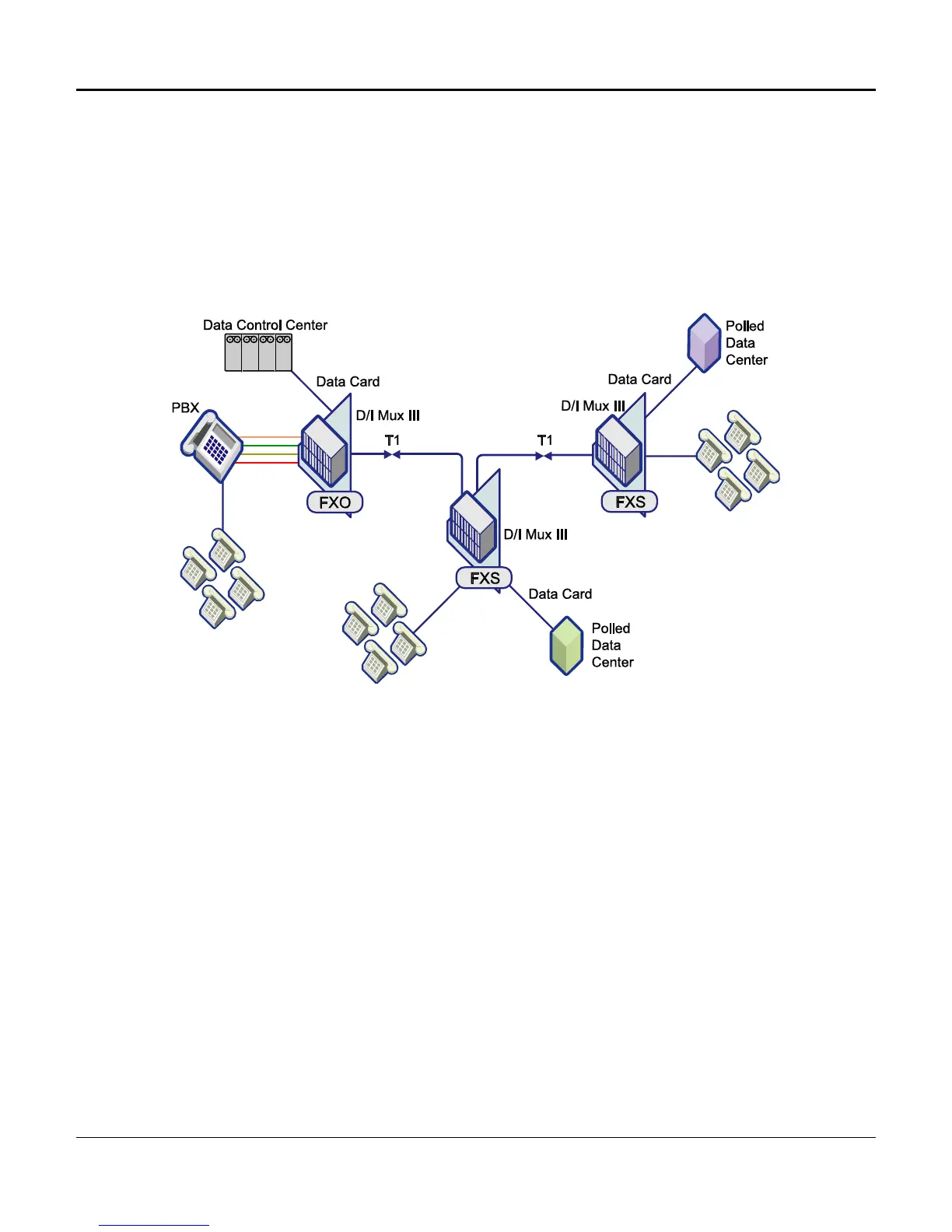Chapter 2. Applications
43
Drop-and-Insert
Drop-and-insert operation is used to transport information to several locations along a single T1
transmission line, as depicted in Figure 2-3. Systems connected to the drop-and-insert network can be
used to communicate with several locations.
Running one T1 line, instead of several, is highly cost effective in that transmission line costs are
minimized, and a drop-and-insert network uses less equipment than does channel bank technology. The
D/I Mux III also allows re-utilization of DS0s in the opposite T1 direction from which they were originally
dropped.
Figure 2-3. Drop-and-Insert Network
Sharing Switch and FXS Applications
With a drop-and-insert system, a single switch can be used to distribute calls to local and remote
locations. Minimizing the connections to the local telephone company's central office, or private
user's switch, simplifies and economizes the network.
Foreign Exchange Office (FXO) channel cards receive calling information from a central office, or
user’s switch, which perceives the FXO to be a standard telephone. The switch supplies talk
battery, ringing, busy signals, and all other telephone requirements. The FXO supplies on-hook,
off-hook, and dial pulse or touch-tone number signalling.
The digital output from the FXO is transported along the T1 to a Foreign Exchange Subscriber
(FXS) line card. The FXS uses these received digital signals to emulate the original central office
or user’s switch. The FXS then communicates to a standard telephone, or to another switch or
key system.
With a drop-and-insert network, the FXO line cards are located at the switch location, and the
FXS line cards reside at any or all the remote locations.
Dropping Data - Polled Data Network

